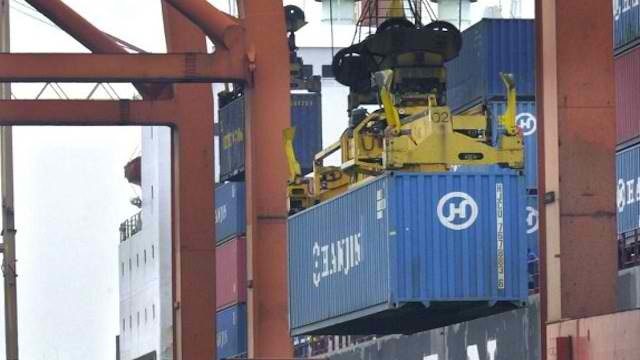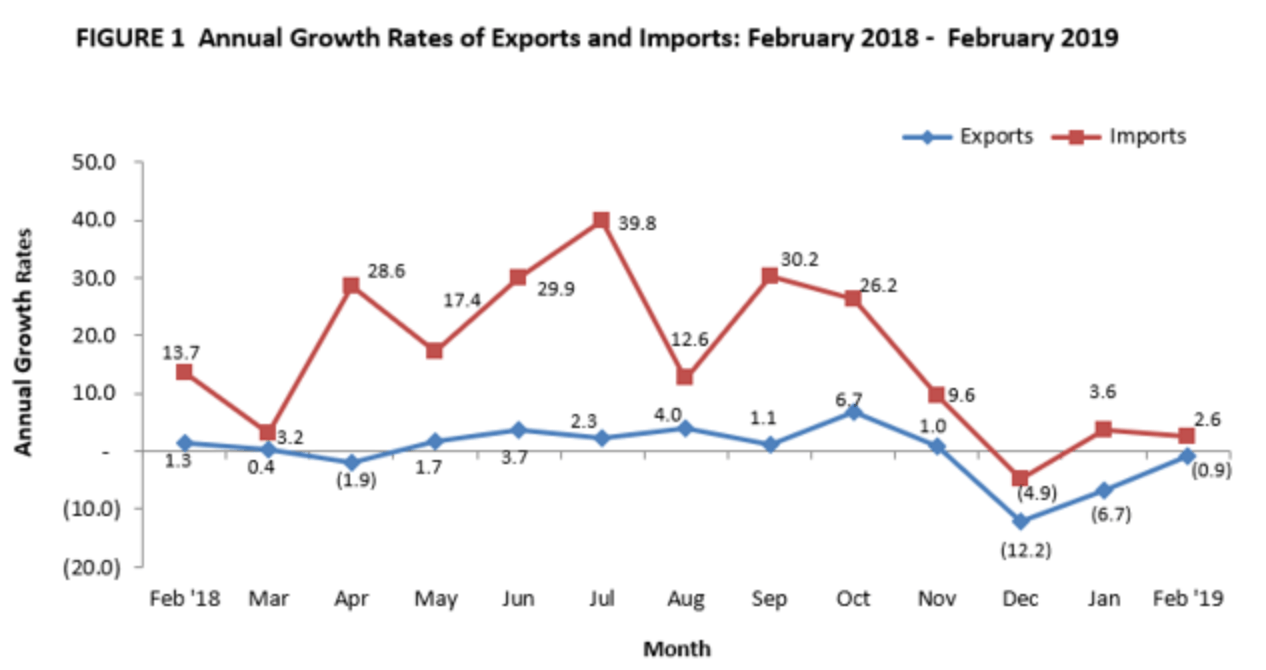SUMMARY
This is AI generated summarization, which may have errors. For context, always refer to the full article.

MANILA, Philippines (UPDATED) – Philippine exports contracted for the fourth straight month, the Philippine Statistics Authority (PSA) announced on Thursday, April 11.
Exports reached $5.18 billion in February, 0.9% lower than the $5.23 billion recorded in the same month a year ago.
The dip was due to lower export sales of 5 of the top 10 exported commodities: metal components (-27.8%), gold (-18.4%), machinery and transport equipment (-16.7%), other manufactured goods (-12.6%), and ignition wiring set and other wiring sets used in vehicles, aircraft, and ships (-3.6%).
The Philippines’ top export destinations were the United States, Japan, China, Hong Kong, and Singapore.
ING Bank Manila senior economist Nicholas Mapa said the Philippines was heavily dependent on the electronics trade, which only managed to post 0.8% growth, while the rest of the sector struggled.
“The ongoing trade war means that the Philippine export sector will need to continue to build on reforms to boost productivity, by enhancing supply chains and increasing standards. At the same time, hopes remain pinned on a weaker currency buying them some time to stay afloat until the true export renaissance,” Mapa said.

Meanwhile, total imports for February went up by 2.6% to $7.97 billion from $7.76 billion a year ago.
The positive growth in imports can be attributed to increases in 5 of the top 10 major import commodities: transport equipment (30%); cereals and cereal preparations (28.4%); mineral fuels, lubricants, and related materials (15.5%); other food and live animals (9.6%); and telecommunication equipment and electrical machinery (7.6%).
Most of the country’s imports were from China, Japan, South Korea, Thailand, and the US.
Mapa said the single-digit growth in imports reflected a slowdown and is a “cause of concern.”
“Elevated borrowing cost after the central bank’s aggressive 175 basis point rate hike in 2018 seems to be hampering capital expansion. Add to this the budget delay, which put government projects on hold,” Mapa said.
The Philippines’ balance of trade in goods increased to a $2.79-billion deficit, from a $2.54-billion deficit year-on-year.
The country’s economic team has repeatedly expressed concern over the widening trade gap.
Improving trade ties
The government said it remained firm in improving relations with trading partners to weather headwinds in the global export market.
Socioeconomic Planning Undersecretary Adoracion Navarro said the Department of Trade and Industry had recently concluded dialogues with the United Kingdom, Hungary, and Czech Republic to boost economic ties.
The Philippines also signed a memorandum of understanding with Indonesia to open up the Indonesian market to Philippine agricultural goods.
“For the recovery in exports performance, facilitating easier movement of goods is crucial,” Navarro said.
Socioeconomic Planning Secretary Ernesto Pernia earlier urged the government to ramp up implementation of projects to support micro, small, and medium enterprises to make these businesses globally competitive, and in turn improve the country’s export figures.
A trade deficit occurs when imports exceed exports, representing an outflow of the Philippine peso to foreign markets.
More imports amid a weak currency also entails more cost for the government. – Rappler.com
Add a comment
How does this make you feel?
There are no comments yet. Add your comment to start the conversation.